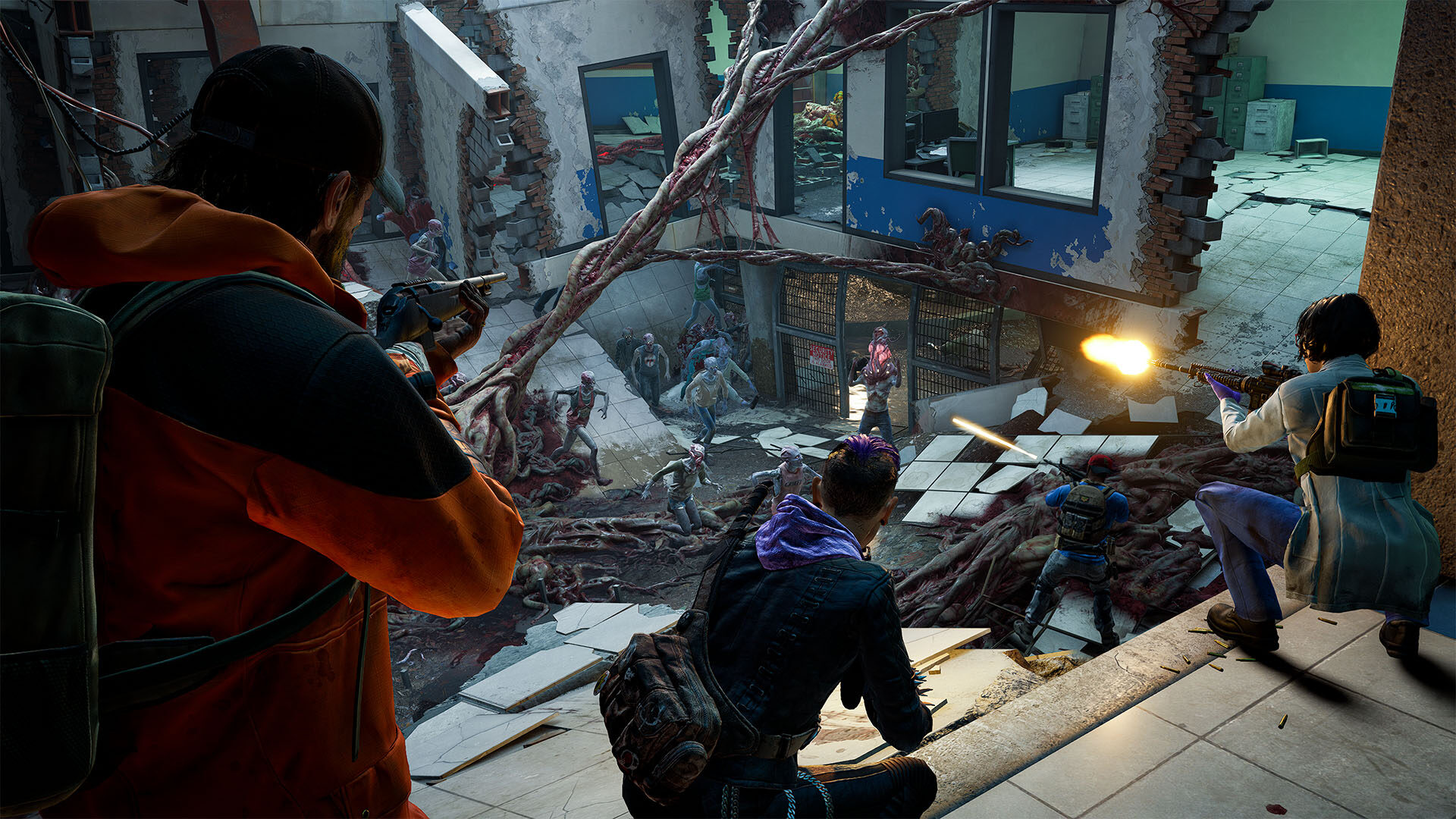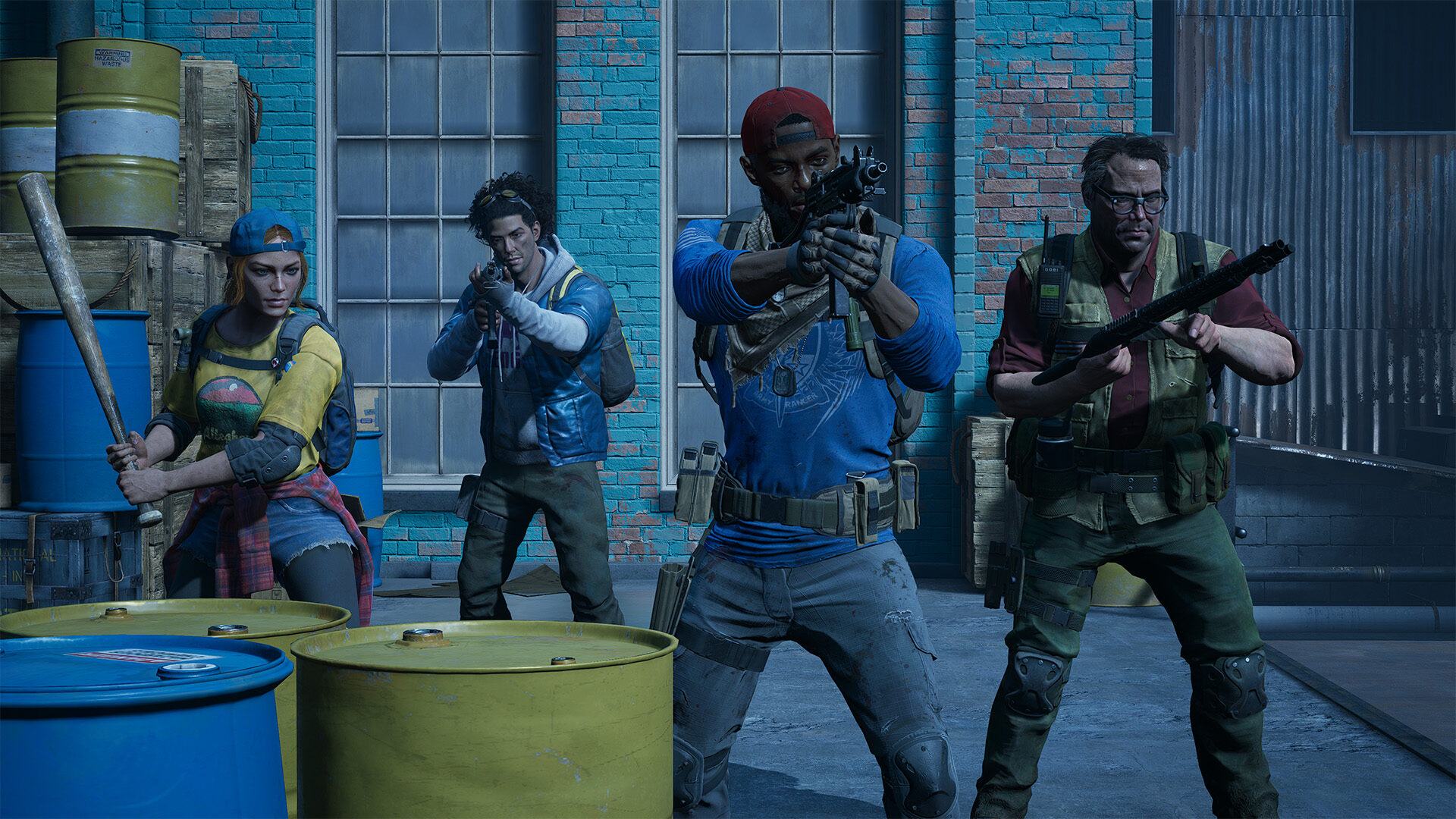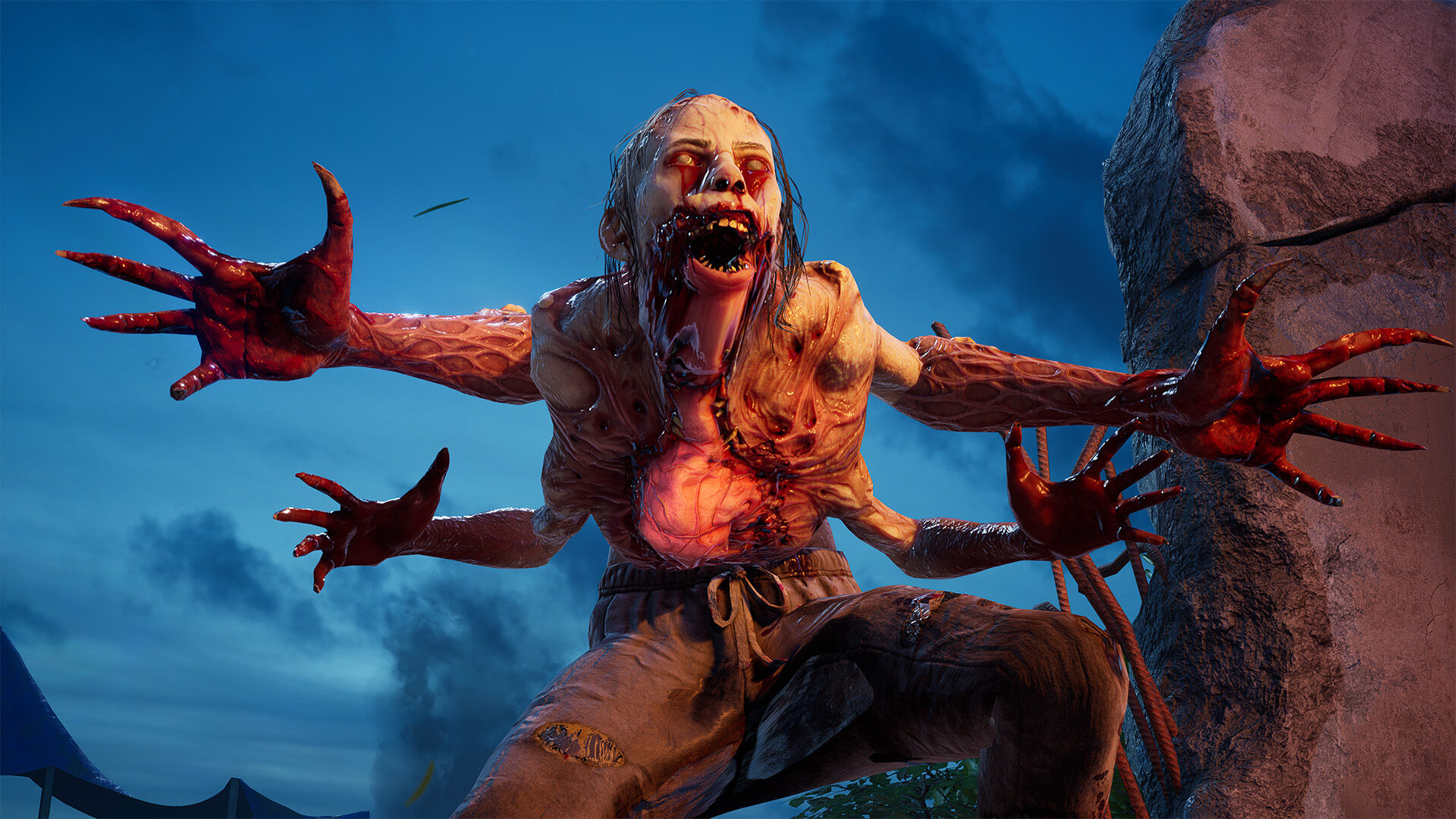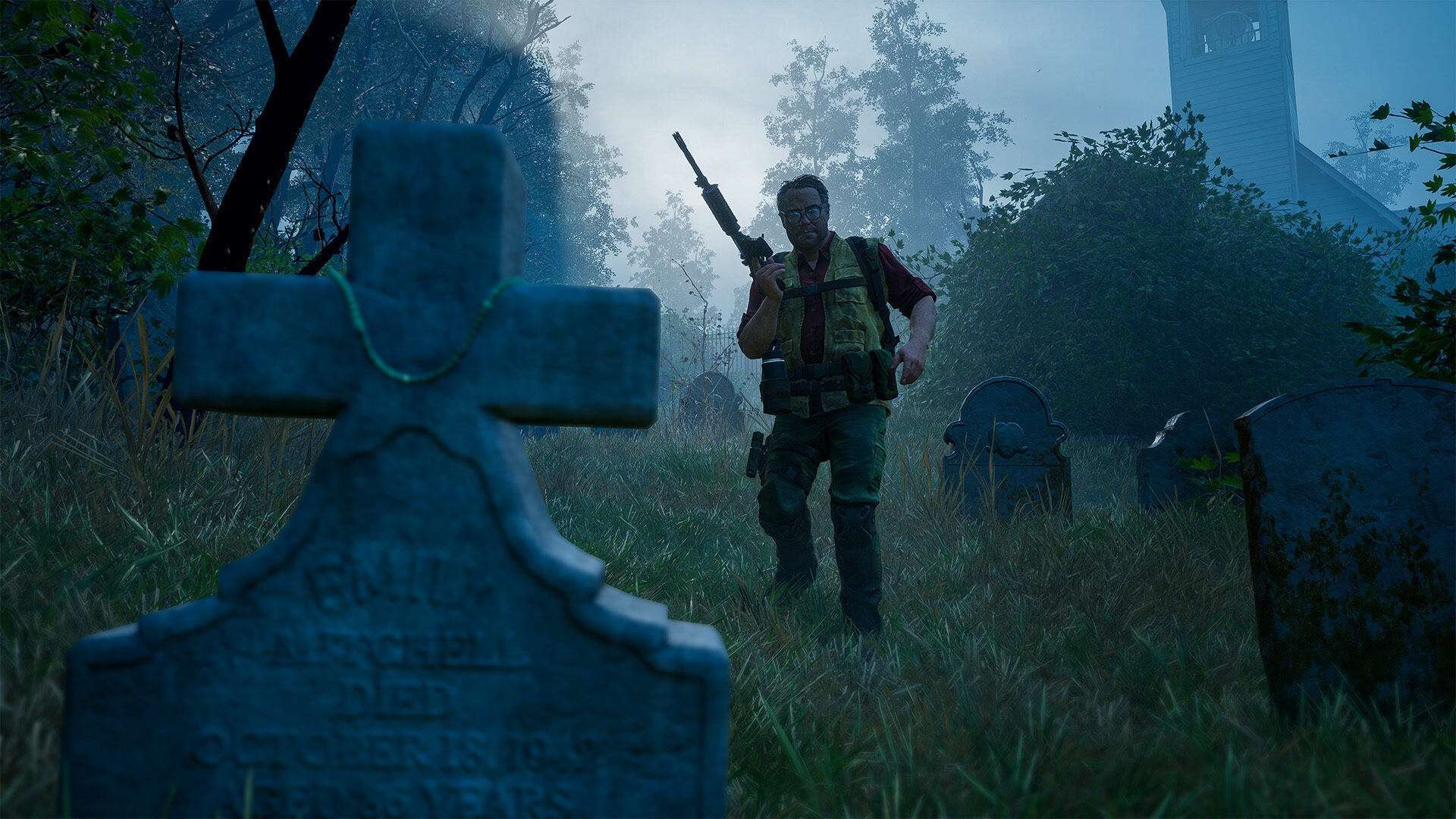According to Steam, I’ve clocked nearly 350 hours playing Left 4 Dead 2. That’s less than the 2,300 hours I’ve put into Team Fortress 2 and the nearly 900 I spent in Apex Legends before moving on, but I’m quite certain it’s good enough for third place on my all-time list. The figure is staggering: That’s 14 and half days of my life, playing a game with about 10 hours of content. That doesn’t even include the ample time I spent playing its predecessor, either.
All of this is to say that, even if Turtle Rock Studios hadn’t drawn its own parallels between its new co-op zombie shooter and the franchise it launched back in 2008, I don’t think I could possibly stop myself. Nearly every aspect of Back 4 Blood, right down to its title, invites direct comparison with Left 4 Dead.
The good news for Turtle Rock is that Back 4 Blood doesn’t immediately collapse under the weight of the comparison, even with the added heft on my nostalgia. From a gameplay standpoint, the studio’s latest take on the concept keeps everything that worked about the older games fully intact, and then layers on some fairly solid ideas.
You’re still picking from a group of playable survivors (now called Cleaners) and heading from safe room to safe room across maps full of common infected (now the worm-infested Ridden) and special variants that are harder to kill and more powerful. You’re still searching through rooms as you go for new weapons, ammo, throwables like molotovs and pipe bombs, and healing supplies. And there’s still an AI Director controlling the ebb and flow of enemies throughout each campaign map, keeping the pressure up to make sure you never feel too comfortable.
Everything here plays just as well as in Left 4 Dead, albeit with plenty of modern conveniences. You can aim down the sights of any weapon, not just scoped ones. The objectives you need to accomplish in each level are more varied, though still largely in the mold of Left 4 Dead 2’s options: hold out until help arrives, find items randomly scattered around an area and load them up, or run a gauntlet to get to the safe room while the Director throws everything it has at you. The biggest addition is dedicated boss fights against a handful of rarer Ridden variants, like the towering Ogre, that can dish out damage and take a ton of bullets to bring down if the Cleaners don’t coordinate. Apart from one memorable (and quite challenging) section near the end, it’s not as dramatic a change as you might expect, though.

The bigger shake-up comes from the wider variety of options among the lower-tier special Ridden. Here, each archetype has three mutations. The Tallboy, for instance, can smash you with his overgrown arm, but the similar-looking Crusher can actually squeeze you with it, immobilizing you and doing damage over time. Likewise, the Stalker can pounce on you to drag you away from the group, like a combination of Left 4 Dead’s Hunter and Jockey, but the Stinger can launch harpoons to pin you down. The power sets are all very thoughtful in a way that makes it clear Turtle Rock put a lot of thought into what worked and what didn’t in Left 4 Dead. And because each mutation chain shares a similar silhouette, it takes slightly longer to figure out exactly what kind of threat you’re up against, which helps ratchet the tension.
But the most integral addition to the formula comes through Back 4 Blood’s card system. Essentially, the game lets you collect and build cards that boost your abilities in combat or survivability. Playing any content gives you supply points you can spend to earn new cards (as well as cosmetics for the guns and Cleaners). You can then assemble these into a deck, which will always surface the same 15 cards in the same order as you play. Before each match starts, you can pick from your hand, made up of the next few cards in the deck, to improve your chances. Each Cleaner gets a default card with set perks and a starting weapon loadout, as well.
What’s more, during each mission you’ll find and earn a currency called copper, which you can spend at shops in safe rooms to unlock weapons, attachments, and other supplies. Taken with the card system, this makes for a much more proactive, strategic game than anything in Left 4 Dead, where you were largely at the mercy of whatever you found in a given playthrough. Cards mean you actually have freedom to build out a character geared towards a certain playstyle. I’m not sure how much depth there is in the long run, but my gut feeling is quite a lot. I’m not generally a fan of injecting cards into games, but Turtle Rock’s approach really works here to add a light RPG layer onto familiar gameplay.
One of the less successful decisions in Back 4 Blood, however, is the way it structures its campaign. Rather than treating clusters of maps as standalone experiences, there’s a linear progression from beginning to end. (You could connect the dots into a single story in Left 4 Dead and especially Left 4 Dead 2, but each campaign was still treated as its own thing from a gameplay perspective.) While this does allow the game to tell a story of sorts, culminating in a big boss-fight showdown, the actual narrative is fairly slight.
The bigger impact of this approach is in how you can actually play the game. If you want to give the big Act 4 finale a go, you’ll need to complete all of Acts 1 through 3 first, one at a time. While the lowest difficulty will let you start from any level in an act you’ve already progressed to, on higher difficulties you need to work through chunks of several maps to unlock a new starting point, making it impossible to inch your way forward. You can take a shortcut if you hop in directly with a friend who’s already unlocked more of the game, but you won’t get credit for the maps you didn’t personally complete, so you won’t be able to start on those in the future. You can’t even quickplay for acts you haven’t already unlocked yourself on a given difficulty.

The approach is admittedly a little restrictive, and in my experience it led to longer than expected matchmaking times. If I started from the beginning of an act, I could get in within a minute or so. But starting in the middle of an act meant I often had to sit on the matchmaking screen for a good 10 minutes before it paired me up with anyone. To date, I’ve only finished the campaign on the lowest difficulty—still plenty of a challenge when you’re relying on matchmaking and almost no one uses their mic—and the fact that I can’t skip straight to the acts I enjoyed most on a higher difficulty feels like an unnecessary barrier in a game so focused on co-op and replayability.
Another major change from Left 4 Dead is the way Back 4 Blood approaches its competitive mode. Instead of allowing players to trade off on runs of the same campaigns, playing as either the Ridden or the Cleaners and then swapping sides, Turtle Rock has opted for a smaller, more self-contained mode called Swarm. You’re still taking turns to see who can survive the longest, but now the action is stationary, confined to individual sections of the campaign maps. As the Ridden team spawns in repeatedly as different mutated specials to try to take down the Cleaners, a damaging cloud of insects gradually closes in, making the playable area smaller and smaller. By the time you’ve survived for around 6 minutes, the area is so small that death is all but guaranteed. In essence, Swarm plays like a hybrid of Horde mode, battle royale, and Left 4 Dead’s Versus mode.
Anyone who spent time in Versus knows it had balance issues, with the best teams of Survivors essentially sprinting through maps as fast as possible and all but the most organized teams of Infected powerless to stop them. Even when Left 4 Dead 2 introduced new specials to the mix to counter the most effective tactics, things still felt a bit off. And everything depended on which player randomly spawned in as the all-powerful Tank—pretty much your one shot at doing a ton of effective damage.
Much of Swarm seems designed to confront these issues head-on. There’s no Tank analogue, and the greater variety of different Ridden types mean you’ll always have a chance to contribute meaningfully to an attack push when you’re on that team, with multiple viable strategies and synergies to counter a strong team of Cleaners. Have the Stinger pin someone down with a Harpoon while the Retch spews acid on them, and you’re going to do a lot of damage.

Still, the biggest issue from Left 4 Dead remains: Matches are often horrendously lopsided, because strong teamwork trumps all. If anything, that the card system carries over here makes coordination even more vital. It’s just hard to find a game of Swarm where one team doesn’t stomp the other so hard that people leave by the end of the first round. Sure, the game makes some adjustments to try to make up the difference for the shorthanded team, but it’s never enough. If you’ve got a core group of friends you can play with and strategize on mic, you’re going to stay competitive and have fun. If you’re matching up with randos, you’re going to have a lot of frustrating losses.
But that’s not really where Back 4 Blood comes up short to me. The reason I’ve spent more than two weeks of my life with the Left 4 Dead games isn’t that they’re perfectly balanced or designed, either as co-op or competitive experiences. It’s because they were great places to hang out. I made friends there. I kept up with friends there. When I found myself with free time, I killed it killing zombies in that fun, familiar space. The characters had sharp, entertaining, and often genuinely funny banter that kept the mood lively, even when my team was being stomped on higher difficulties. The maps and scenarios, especially in the sequel, were imaginative and memorable. I haven’t booted up Left 4 Dead 2 in a decade, but I can vividly recall rushing around a shopping mall atrium, trying to fill a car with gas cans while Hunters ping-ponged off the heights above. I could probably still draw portions of the Dark Carnival theme park map from memory.
If there’s anywhere Back 4 Blood stumbles, it’s here. The world of Fort Hope and Evansburgh, along with the survivors that occupy it, are too bland for me to see myself ever forming any real attachment to any of them. Environments look fine and play great, but they almost all fall into the same gritty, post-apocalyptic mold. Already, they’re starting to congeal together in my mind into a single drab mass. One notable exception—a finale where you need to hold out in a bar while Motörhead’s “Ace of Spades” blares on the jukebox—feels like little more than a hint at the personality the game might have had.
Now, I won’t go so far as to say the game’s eight playable Cleaners come up quite that short. Each character does have a few defining traits that separate them from the rest, to be sure, but the moment-to-moment writing can’t really hold up its end of the bargain. Dialogue never crackles, and the characters never bounce off one another in any truly memorable way. Most of what everyone says during gameplay feels like the same largely generic callouts, and the cutscenes bookending acts are too short and action-focused to round anyone out.
More conspicuous is the absence of any real levity during gameplay. Yes, there are attempts at comedy, but I wouldn’t say they’re great. One bit from Holly about the phrase “shooting fish in a barrel” went on for so long without a solid punchline it felt like I’d somehow loaded into Fort Hope’s very disappointing open mic night. Turtle Rock seems to understand the necessary relief humor and lightheartedness can provide in a game that can be almost oppressive in its difficulty, but the execution on that front is lacking.

And it’s certainly no help that the survivor whose perks appeal to me the most, Hoffman, is a conspiracy-theory-obsessed prepper. Left 4 Dead’s Nick and Francis weren’t necessarily likeable, but they were prickly in an endearing way. And more importantly, you didn’t gain or miss out on any gameplay benefits by picking them. In Back 4 Blood, to maximize my chances I have to take the perks of the characters, and not just their personalities, into account. Hoffman’s bonus ammo and extra grenade slot appeal the most to my playstyle, so I’m forced to endure him referring to himself in the third person and saying dumb shit. Every time he opens his smug mouth, all I can think about is that absent a zombie apocalypse he would one-thousand percent be posting rants about the Maricopa County Board of Elections on Facebook.
This is ultimately my biggest—and perhaps only—substantial gripe with Back 4 Blood: It’s a game I have fun playing, with a design that smartly and fairly unobtrusively encourages me to keep replaying all its content, but I’m not feeling any spark that makes me want to replay it, absent the dangling carrots of modern game design. I enjoyed playing through the game, and I might dive in a few more times with friends, but even with all the skins and cards to unlock and difficulty levels of master, I don’t feel drawn to keep coming back 4 more.
Maybe the world has changed. Maybe the tastes of the gaming public have changed. Maybe the problem is narrower than that, and it’s just that I’ve changed. But whatever the underlying cause, in my eyes Back 4 Blood never crests the hill from being a good co-op zombie shooter to a great one. Turtle Rock has crafted a spiritual successor packed with plenty of smart innovations and modernizations but failed to recapture the magic that made Left 4 Dead iconic. Back 4 Blood, then, nails the successor part, but comes up a bit short on the spirit.
|
★★★★☆
Back 4 Blood certainly improves upon the gameplay formula of Turtle Rock’s earlier Left 4 Dead, with a deeper feature set that allows for greater strategy and customization while fending off Hordes of the undead. But the world of the game and its characters lack the charm of its spiritual forebear, and a few curious design choices keep it just shy of greatness. |
Developer Turtle Rock Studios Publisher Warner Bros. Interactive Entertainment ESRB M - Mature Release Date 10.12.2021 |
| Back 4 Blood is available on PlayStation 5, Xbox Series X/S, PlayStation 4, Xbox One, PC. Primary version played was for Xbox Series X. Product was provided by Warner Bros. Interactive Entertainment for the benefit of this coverage. EGM reviews on a scale of one to five stars. | |
